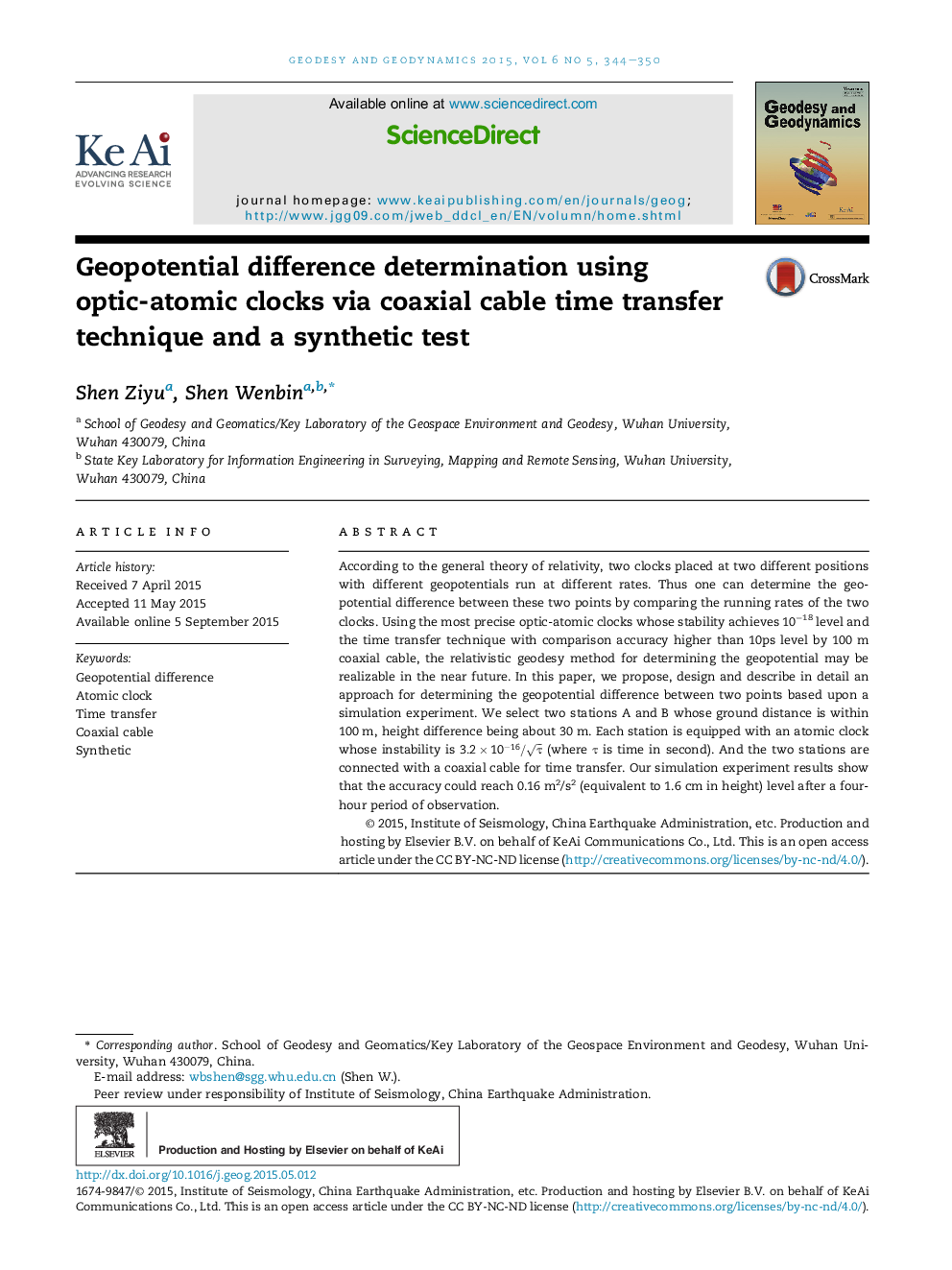| Article ID | Journal | Published Year | Pages | File Type |
|---|---|---|---|---|
| 4683530 | Geodesy and Geodynamics | 2015 | 7 Pages |
According to the general theory of relativity, two clocks placed at two different positions with different geopotentials run at different rates. Thus one can determine the geopotential difference between these two points by comparing the running rates of the two clocks. Using the most precise optic-atomic clocks whose stability achieves 10−18 level and the time transfer technique with comparison accuracy higher than 10ps level by 100 m coaxial cable, the relativistic geodesy method for determining the geopotential may be realizable in the near future. In this paper, we propose, design and describe in detail an approach for determining the geopotential difference between two points based upon a simulation experiment. We select two stations A and B whose ground distance is within 100 m, height difference being about 30 m. Each station is equipped with an atomic clock whose instability is 3.2×10−16/τ (where τ is time in second). And the two stations are connected with a coaxial cable for time transfer. Our simulation experiment results show that the accuracy could reach 0.16 m2/s2 (equivalent to 1.6 cm in height) level after a four-hour period of observation.
